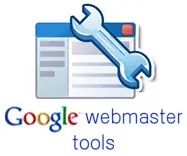When you make your living online, you realize the need for multiple streams of income.
One of the easiest and most lucrative ways to generate a secondary income, which also happens to be passive, is via Google’s Adsense program.
I’m sure you’ve read the claims of a few individuals generating five figure monthly incomes from Adsense. For many of you, I’m sure you are wondering why you aren’t making this same income yourself.
Well, wonder no more. If you follow my simple six step system, you will be well on your way to healthy Adsense profits within three months.
Are you ready? It’s now time to pay attention.
Step 1 – Preparation.
The key to making money with Adsense is all about numbers. BIG numbers!
Sure, there are a few people making serious money with less than ten sites, but these are the exception.
Your goal will be twenty-four sites in three months. That’s just TWO sites per week!
In order to accomplish this, I recommend one of the many available page generation tools available today.
Step 2 – Determine Your Markets.
In order to maximize Adsense income with only twenty-four sites, you must know which markets are paying well.
To break this down even further, you need to know which keywords within those markets are paying the most.
Step 3 – Register you domains.
Once you’ve identified and chosen your markets, you must register domains appropriate to those markets. For example, if your market is ‘Cabbage Patch Dolls’, a domain such as http://www.cabbage-patch-doll.com/ would be appropriate.
Step 4 – Create your site.
Using your favorite page generation software and keyword list, it’s time to develop your site. There are several key points to bear in mind when you develop these specifically for Adsense.
1. Format – Always use the large 336×280 large rectangle.
2. Border – Match the same color as your background.
3. Background color – Border – Match the same color as your background.
4. Link = “0000CC”
5. Color_url = “999999″
6. Color_text = “333333″
7. Position – Far left or center and just above the page fold (Top 25% of site)
Step 5 – Verify and track your site
Visit your site and make sure all links work and that the sites appear to your satisfaction. You should also check out the ads Google is displaying. Are they targeted to your primary high paying keyword? If not, recreate your site using your high paying keyword in a higher density throughout your site.
Make sure you track your Adsense format, position, and traffic with a tracking system specifically designed for Adsense. Once you know your stats, you can adjust for maximum clickthroughs and higher revenues.
Step 6 – Get your site listed in the search engines.
This is simple… no tricks involved. Simply rent links to your site. A PR7 or PR8 link will do the job.
While I’ve simplified the process here, you are now armed with enough information and resources to make some serious money with Adsense.





























